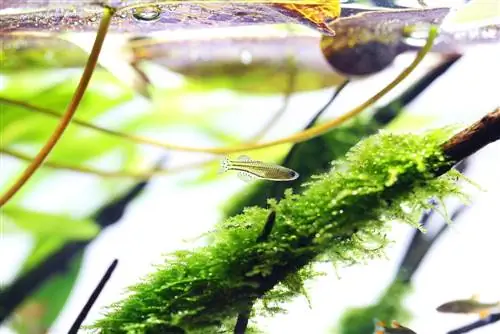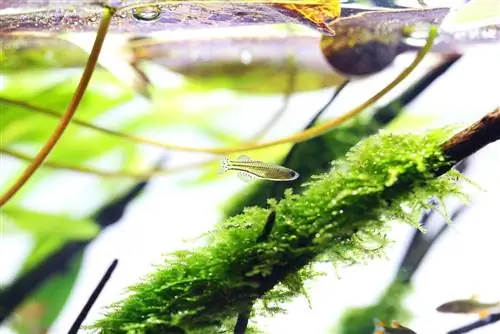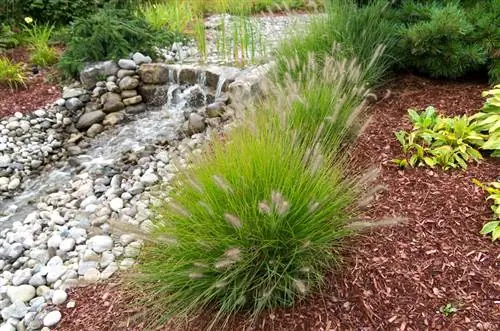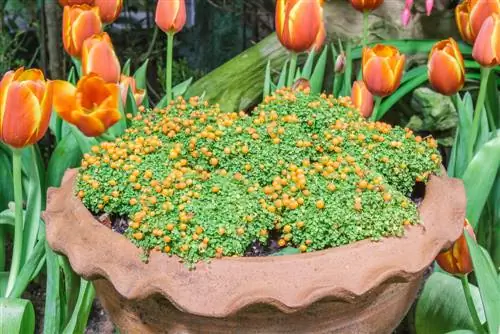- Author admin [email protected].
- Public 2023-12-16 16:46.
- Last modified 2025-01-23 11:21.
Coral moss can be cultivated not only as an ornamental plant in a pot. It is also highly valued as an aquarium plant. To prevent the moss from floating around freely in the aquarium and possibly clogging the filters, you should tie it up. What you need to consider when untying.

How can you attach coral moss to your aquarium?
To tie up coral moss in the aquarium, first divide it into manageable pieces and attach them to materials such as stones, wood, roots or decorative objects using fishing line or plastic thread. This way the moss stays in the desired place and grows in a controlled manner.
Tie up coral moss in the aquarium
Coral moss is often kept as a plant in the aquarium because it is very easy to care for and does not grow too quickly. This can be used to create very nice hiding places for the aquarium inhabitants.
However, if the coral moss gets out of hand, you have to divide it before it overgrows the entire aquarium. You should then tie it up so that the plant stays where you want it. The moss otherwise floats around everywhere in the pool, clouds the water and, under unfavorable circumstances, gets caught in the filter.
Before you can tie up the coral moss, share it. Scissors and knives are suitable for this. But you can also easily tear it apart. The individual pieces should not be too small so that they can be tied up more easily.
What can coral moss be tied to?
Materials that are available as decoration in the aquarium are very suitable for tying:
- Stones
- Woods
- Roots
- Decorative Items
To tie up, use cords that won't rot in water. Experienced aquarists rely on fishing line or plastic threads. There are also experts who stick the coral moss in bunches onto stones and wood.
Care for coral moss properly
Coral moss in the aquarium hardly needs any care. Like all types of moss, it requires sufficient light to grow well.
Fertilization is usually not necessary. Occasional CO2 doses ensure that the coral moss retains its strong green color and grows more compactly.
If a dense carpet of coral moss is desired, place coral moss on the floor and cover it with a stainless steel mesh. This keeps the moss down. It can grow out through the holes and over time forms a dense green area.
Tip
The coral moss owes its name to the delicate shoots that look very similar to those of corals. The shoots do not grow longer than three centimeters. It comes from Asia and was found there at a waterfall before it began its triumphant journey into the world.






